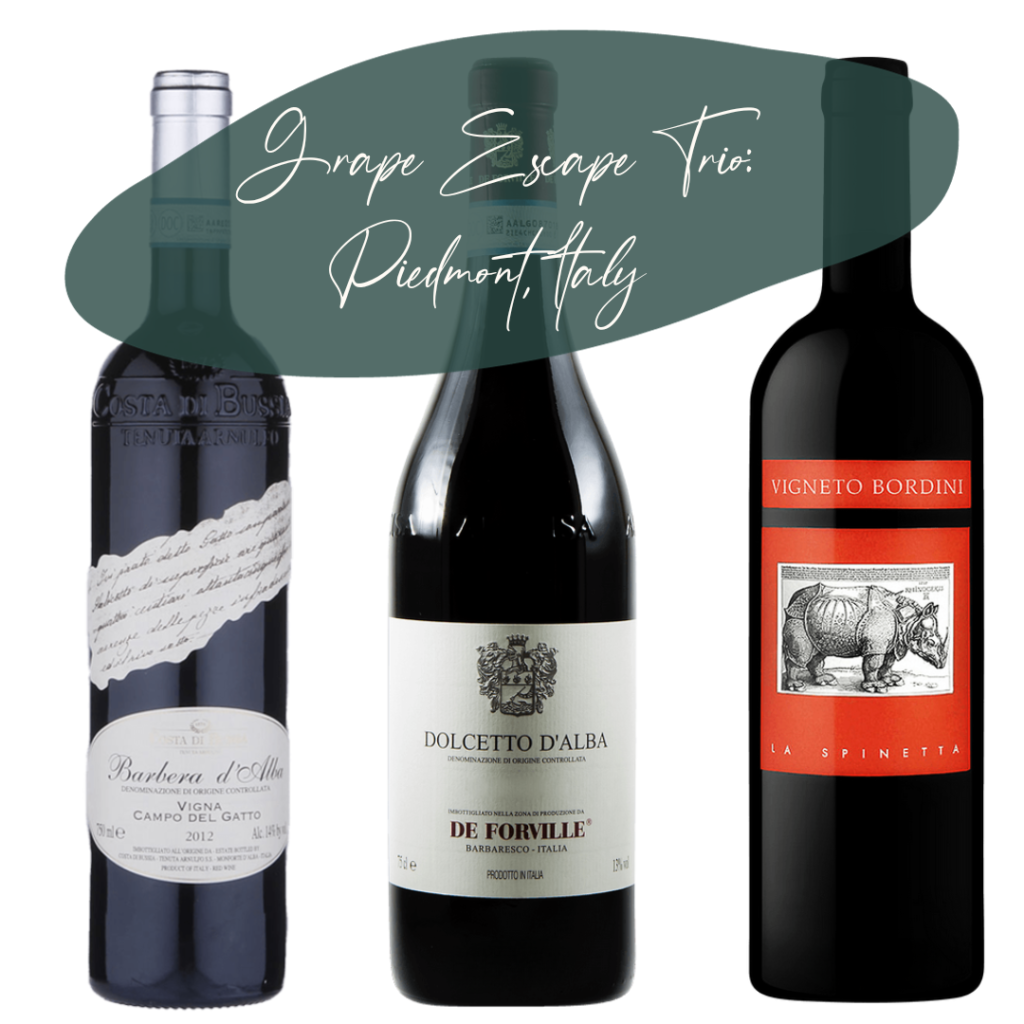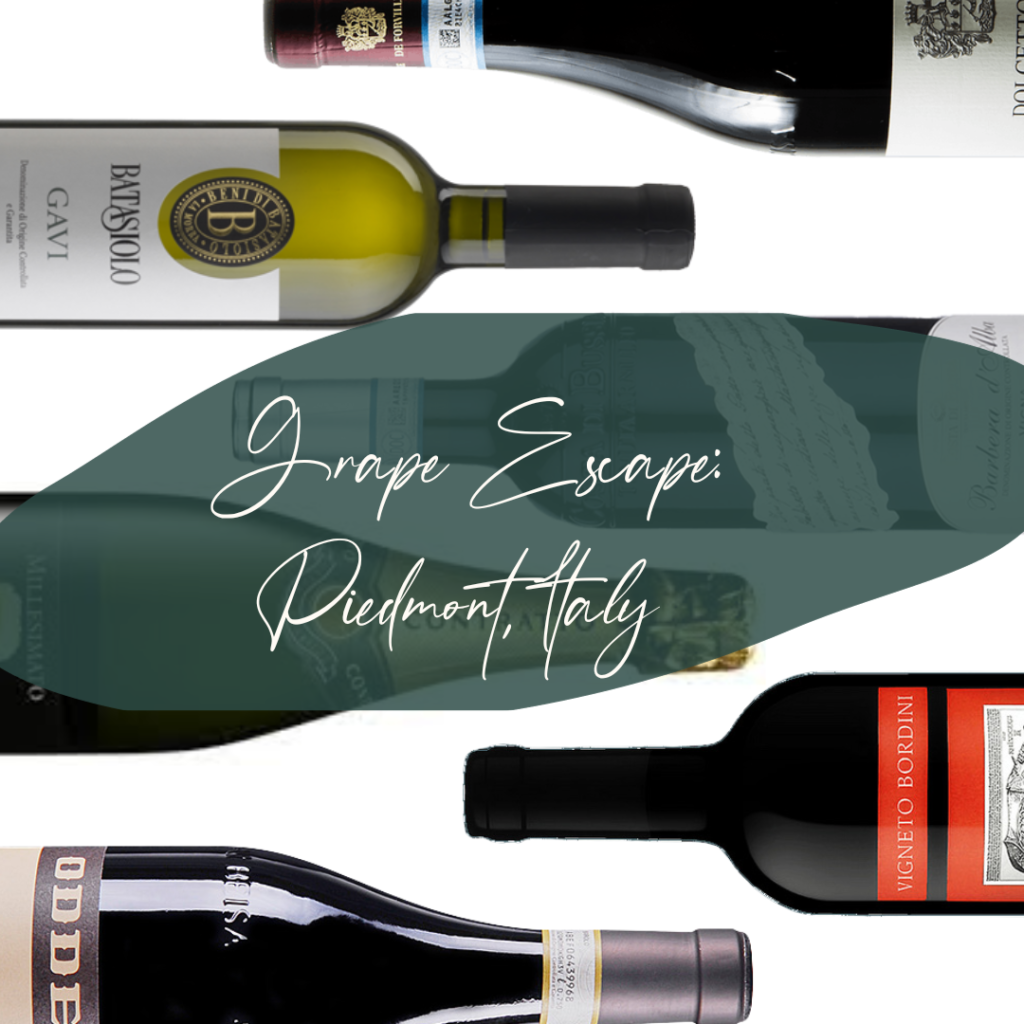Grape Escape: Piedmont


Roads zigzagging through mountains, tiny villages perched on hilltops, and vineyards dusted with snow… not the typical mental image of Italy. Films generally portray a sun-drenched hilltop villa with lush greenery and warm sunshine. Glasses of crisp white wine on a sunlit patio. Did I mention the sunshine?
It’s winter, and we all miss sunshine, but that doesn’t mean there are not wonderful wines to be had. Two years after we got married, my husband and I went to Piedmont… in the offseason. In winter.
Two years after tying the knot, my husband and I embarked on a vacation to Piedmont, enticed by a TravelZoo deal that included flights and accommodation for just $600. I clicked. It was Italy! It couldn’t be that bad, right? It was both absolutely amazing … and absolutely freezing.
I vividly remember shivering while crossing the parking lot at La Spinetta, giddily skipping like the wine nerd I am, with teeth chattering. I refused to let weather ruin a visit to what may be my favorite producer in the world. My husband’s most vivid memory of that trip may be being pulled over in the village of Barolo. Between our non-existent Italian and the police’s non-existent English we were all just happy to get out of the palazzo. Pro Tip: you can’t drive in the village center… although GPS will tell you otherwise.
I’m not leading a trip to Piedmont this year, but I can deliver you a Grape Escape to explore this wonderful region.
Fast Facts
- Occupying the northwest corner, this is the second-largest region (after Sicily).
- Piedmont contains the highest number of DOCGs (17) and DOCs (42).
- The region produces the most classified wine in the country—partially because it does not allow for the production of IGT wine.
- First region to focus on single-vineyard wines in Italy.
- Tend to have the lowest yields in the country.
- Hail cannons are regularly used disrupt hail production in clouds and prevent hail damage.
Piedmont in Context
In Italian, the region is Piemonte—but the English spelling is Piedmont. The translation is ‘foot of the mountain,’ which perfectly describes the region overall. Three sides of the region are hemmed in by mountain ranges. Apparently, the skiing is delightful. This is the home of risotto, truffles, and osso buco. Rich, warm dishes that pair beautifully with the wines of the region.
Grapes
Without a doubt, the most prestigious grape of Piedmont is Nebbiolo—and the prestige is not short-lived. There are references to the grape that date back to the 13th century! The ‘king and queen of Italian reds,’ Barolo and Barbaresco, are made from 100% Nebbiolo. The simplest way to explain the difference: slightly different hillsides and elevations. Langhe DOC is from the vineyards within the Barolo and Barbaresco spaces that are below the legal elevation. These options can be pricey though—Gattinara DOCG or Ghemme DOCG are further north with brighter acidity and can be a bit more rugged. But Nebbiolo is only 9% of the region’s production.
It took everything in me not to include Moscato in the Grape Escape. This is the home of Moscato—21% of the region’s production is the slightly fizzy sweet white. There are quality examples—my favorite is probably La Spinetta’s ($28). Everyone makes Moscato—it’s the cash cow of the region, and truly, they are happy wines.
The wines the are drunk more often are the Barbera (30%) and Dolcetto (13%) of production. These wines were written off for a long time as low quality and not worth being exported. This is no longe the case. Production methods have improved and the wines are really good. They are not Barolo- they have completely different taste profiles, but that doesn’t mean that they are not worth exploring.
Order a Grape Escape delivered to your door!


